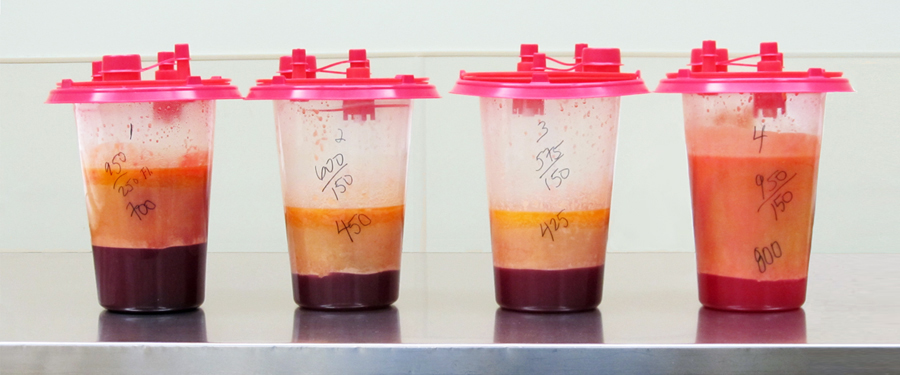It is important to remember that liposuction is a contouring operation, not an operation performed for weight loss. Nonetheless, patients naturally want to know how much fat was removed during their liposuction procedure, and they frequently want to know how much that fat weighs.
Prior to aspirating the fat, a wetting solution (also called tumescent fluid) is infused in the areas that are going to be treated. This wetting solution typically consists of IV fluid, lidocaine, epinephrine. The purpose of tumescent fluid is to provide some pain relief, reduce blood loss, and allow the fat to be aspirated more easily. Different surgeons will elect to infuse different volumes of this wetting solution prior to performing the liposuction.
The aspirate that is removed during suctioning consists of a mixture of both fat and fluid. With time, the aspirate will separate into a fat layer on the top (because fat is less dense than water) and a fluid layer on the bottom.
The fat layer consists of particulate fat and a small amount of oils. The volume of fat aspirated will depend upon the size of the area treated, and how thoroughly the area was suctioned.
The fluid layer consists of wetting solution and a small amount of blood. The volume of fluid aspirated will depend upon how much wetting solution was injected prior to suctioning, and how much bleeding occurred during the operation. The greater the volume of wetting solution injected at the beginning of the procedure, (more than likely) the greater the volume of fluid in the aspirate. The goal is to remove fat with as little bleeding as possible; so generally, the amount of blood present in the fluid layer is minimal.
After the entire aspirate is allowed to settle, the volume of fat removed can be directly measured. The density of fat = 0.918 g/mL.
The weight of the aspirated fat can be calculated by multiplying the aspirated volume of fat (in milliliters) by 0.918 g/mL.
The weight of fat (in grams) is converted to kilograms by dividing by 1000.
The weight of fat (now in kilograms) is converted to pounds by multiplying by 2.2 pounds/kilogram.
For example, if 1500 mL of fat were aspirated during an abdominal liposuction procedure, the calculation would be as follows:
1500 mL aspirated fat x 0.918 gr/mL = 1377 gr of aspirated fat
1377 gr = 1.377 kg of aspirated fat
1.377 kg x 2.2 lbs/kg = 3.0 lbs of aspirated fat
Therefore, 1500 mL of aspirated fat weighs 3 pounds.
So for the average patient, their weight changes very little following liposuction.


Can a breast reduction, with a lift, liposculpturing, and tummytuck be done all at once.
Yamile, Thank for your question. That is potentially quite a bit of surgery depending upon what is needed for each particular surgical procedure. If the procedures you are inquiring about do not require a lot of work/time then it is easier to combine them. However, if these are more extensive and involved procedures then combining them becomes more difficult. It would be best to address and answer that question after speaking to you about your desires and goals, and after performing an examination. It would then be possible to discuss your options in relation to potentially having more than one procedure.